Krátké lyže jsou lehké, obratné a skvělé pro začátečníky nebo ty, kteří hledají rychlé zatáčky. Ale mají své kompromisy, zejména v rychlosti, stabilitě a výkonu v hlubokém sněhu. Tady je, co potřebujete vědět:
Klíčové poznatky:
- Zatáčení: Krátké lyže zatáčí rychleji, ale postrádají přesnost při vysokých rychlostech.
- Stabilita: Méně stabilní při vysokých rychlostech kvůli menšímu kontaktu se sněhem.
- Výkon v POWDER: V hlubokém sněhu mají problémy kvůli menší ploše.
- Úchop hran: Snížený úchop na zledovatělých nebo tvrdých površích.
- Nejlepší použití: Ideální pro začátečníky, freestyle lyžování nebo úzké prostory.
Rychlé srovnání:
| Vlastnost | Krátké lyže (<160 cm) | Dlouhé lyže (>170 cm) |
|---|---|---|
| Schopnost zatáčení | Rychlé, ostré zatáčky | Širší, plynulejší zatáčky |
| Stabilita rychlosti | Méně stabilní při vysokých rychlostech | Stabilnější při vysokých rychlostech |
| Hluboký sníh | Více se potápí, méně plave | Lepší plavání, stabilnější |
| Váha | Lehčí, snadněji přenosné | Těžší, stabilnější |
| Nejlepší pro | Začátečníci, úzký terén | Pokročilí lyžaři, vysoké rychlosti |
Krátké lyže nabízejí pohodlí a snadné použití, ale nemusí vyhovovat všem podmínkám nebo pokročilým stylům lyžování. Vyberte si podle své úrovně dovedností a preferovaného terénu.
Krátké vs dlouhé lyže - SKUTEČNÝ rozdíl
Problémy se stabilitou rychlosti
Kratší lyže často čelí výzvám při vysokých rychlostech, protože mají menší kontakt se sněhem ve srovnání s delšími lyžemi. Tento snížený kontakt může vést k nestabilitě, což ztěžuje kontrolu, brzdění a efektivní řízení rychlosti.
Omezení kontroly rychlosti
Jedním z hlavních problémů kratších lyží je jejich omezený kontakt hrany se sněhem. Anthony DeRocco, K2 ředitel vývoje produktů, to uvádí na pravou míru:
"Kontrola vibrací na lyžích funguje podobně jako zavěšení auta, které zlepšuje kontrolu tím, že udržuje kontakt mezi pneumatikami a vozovkou. Pokud je mezi pneumatikou a vozovkou vzduch, žádné řízení nebude mít účinek. Totéž platí pro lyže a sníh: žádný kontakt znamená žádnou kontrolu."
Testy ukazují, že kratší lyže jsou náchylné k častým a intenzivním vibracím. Zejména špička lyže vibruje více než patka, což ovlivňuje několik klíčových výkonových faktorů:
| Výkonnostní aspekt | Vliv vibrací |
|---|---|
| Kontrola zatáček | Snižuje se přesnost a citlivost |
| Brzdná síla | Brzdění je méně účinné |
| Řízení rychlosti | Obtížnější udržet kontrolu při vysokých rychlostech |
| Úchop hrany | Kontakt se sněhem se stává nekonzistentním |
Snowfeet technická řešení
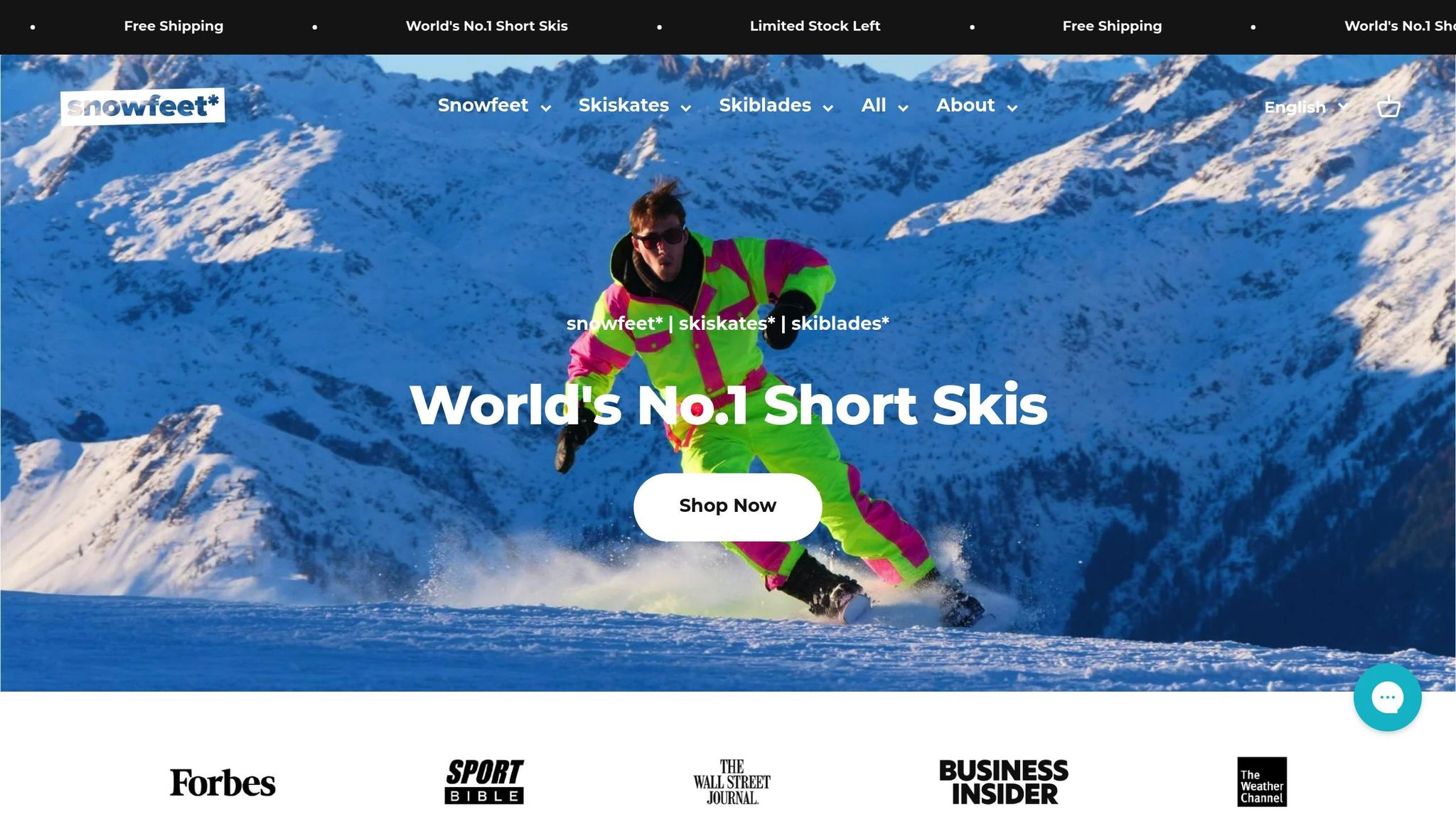
Aby Snowfeet vyřešil tyto problémy s vibracemi a kontrolou, vyvinul specifická řešení. Jejich 99 cm Skiblades jsou navrženy tak, aby poskytovaly stabilní, ale obratnou volbu pro středně pokročilé lyžaře. Pro zkušenější uživatele nabízejí 120 cm Skiblades lepší stabilitu, což je činí vhodnějšími pro náročnější terén a vyšší rychlosti.
Některé z výrazných vlastností zahrnují:
- Camber + Rocker na špičce a patce: Zlepšuje kontrolu, zejména na neupraveném sněhu.
- Konstrukce kovové hrany: Poskytuje přesnost i při vyšších rychlostech.
- Technologie grafitové skluznice: Zvyšuje rychlost a odolnost.
- Hluboký parabolický boční výřez: Zajišťuje plynulejší a snadnější zatáčení.
Tyto pokroky řeší mnoho obav o stabilitu spojených s kratšími lyžemi, přičemž si stále zachovávají jejich kompaktní a obratnou povahu. Fyzika kratších lyží však znamená, že se přirozeně budou při vysokých rychlostech cítit méně stabilní ve srovnání s jejich delšími protějšky.
Problémy se stabilitou rychlosti
Short skis často čelí problémům se stabilitou při vysokých rychlostech. Jejich snížený kontakt se sněhem může způsobit pocit menší jistoty, což může ovlivnit sebevědomí lyžaře na svahu.
Omezení kontroly rychlosti
Omezený kontakt hran kratších lyží přináší několik výkonových překážek:
| Faktor výkonu | Dopad na Shorter Skis |
|---|---|
| Přilnavost | Snížený kontakt se sněhem vede k menší stabilitě |
| Vibrace | Více chvění na nerovném terénu |
| Rovnováha | Vyžaduje větší přesnost od lyžaře |
| Kontrola rychlosti | Obtížnější udržet stabilní kontrolu |
Pro lyžaře přecházející z tradičních dlouhých lyží je rozdíl znatelný. Krátké lyže mohou působit nervózně, zejména na nerovném terénu, což je při vyšších rychlostech obtížnější ovládat.
Technická řešení Snowfeet
Aby Snowfeet vyřešily tyto problémy se stabilitou, představily klíčové designové vylepšení ve svém modelu Snowfeet PRO:
- Extended Length Design: Přidává více stability, aniž by omezoval obratnost, kterou krátké lyže prosluly.
- Advanced Base Technology: Vylepšená skluznice zlepšuje celkovou kontrolu a zvyšuje přilnavost hran.
- Metal Edge Construction: Kovové hrany poskytují lepší brzdný účinek a plynulejší zatáčky.
Tyto aktualizace byly uživateli velmi dobře přijaty, kteří hlásí výrazně lepší rovnováhu mezi kompaktní praktičností krátkých lyží a stabilitou, kterou potřebují.
"Celkově krátké lyže zatáčejí rychleji, dlouhé lyže jedou rychleji."
Výkon v hlubokém sněhu
Proplouvání hlubokým sněhem může být opravdovou zkouškou pro krátké lyže. Jejich zkrácená délka přináší jedinečné výzvy při zdolávání čerstvého, neupraveného POWDER.
Výzvy krátkých lyží v POWDER
Hlavní problém krátkých lyží v POWDER spočívá ve fyzice – konkrétně v ploše. Takto to funguje:
| Faktor výkonu | Efekt v hlubokém sněhu |
|---|---|
| Rozložení váhy | Menší plocha způsobuje, že lyže více klesají |
| Plavání | Menší schopnost zůstat na povrchu měkkého, hlubokého sněhu |
| Lokální tlak | Zvýšený tlak na povrch sněhu ztěžuje pohyb |
Tyto omezení zdůrazňují, proč jsou specifické designové úpravy klíčové pro zlepšení výkonu v POWDER.
Funkce Snowfeet POWDER
Model Snowfeet POWDER 99 CM je navržen tak, aby překonal typické problémy kratších lyží v hlubokém sněhu. Jeho širší design poskytuje potřebnou plochu, zlepšuje vznášení a efektivněji rozkládá váhu.
Klíčové designové prvky zahrnují:
- Technologie skluznice pro všechny terény pro hladší výkon v POWDER.
- Parabolický tvar pro lepší kontrolu a ovladatelnost v měkkém sněhu.
- Pokročilé materiály skluznice navržené pro zvládání podmínek hlubokého sněhu.
"S délkou 99 cm jsou Snowfeet Skiblades ideální pro pohyb v měkkém, hlubokém sněhu. Přidaná šířka a parabolický tvar zajišťují snadné vznášení a plynulou kontrolu, což vám dává jistotu prozkoumávat nedotčený terén."
- Snowfeet, popis produktu
Modely Snowfeet o délce 99 cm a 120 cm poskytují lepší vznášení a stabilitu v hlubokém sněhu ve srovnání s kratšími variantami. Nabízejí rovnováhu mezi obratností krátkých lyží a výkonem potřebným pro dobrodružství v POWDER.
sbb-itb-17ade95
Kvalita a kontrola zatáčení
Rovnováha mezi délkou lyže a výkonem při zatáčení přináší jasné kompromisy při použití kratších lyží. Uvědomění si těchto omezení je klíčové pro nastavení praktických očekávání v různých lyžařských podmínkách. Tato část navazuje na předchozí diskuse o rychlosti a výzvách v POWDER, nyní se zaměřuje na to, jak kratší lyže ovlivňují výkon při zatáčení, zejména u pokročilých lyžařů.
Limity expertního zatáčení
Kratší lyže představují jedinečné výzvy pro zkušené lyžaře, kteří požadují přesnou kontrolu, zejména při vyšších rychlostech. Zkrácená délka hran přímo ovlivňuje několik aspektů výkonu:
| Aspekt zatáčení | Dopad na výkon |
|---|---|
| Kontrola hran | Méně přilnavosti na tvrdém a zledovatělém povrchu |
| Poloměr zatáčení | Omezeno na ostré, rychlé zatáčky |
| Stabilita rychlosti | Snížená stabilita při vyšších rychlostech |
| Rovnováha | Vyžaduje přesnější nastavení dopředu a dozadu |
"Hlavní výhodou krátkých lyží je jejich poloměr zatáčení. Umožňují velmi ostré S zatáčky." - Tyson Hennings
Tento kompromis se projevil na olympijských závodech, kde sportovci používající lyže dlouhé 155 cm utrpěli zranění kolen kvůli extrémní ostrosti jejich zatáček. Tyto případy vedly k regulacím, které vyžadují delší lyže pro zajištění bezpečnějšího poloměru zatáčení při vysokorychlostních závodech.
Technologie hran Snowfeet
Aby Snowfeet zvládl výzvy zatáčení spojené s kratšími lyžemi, zavedl pokročilou technologii hran v celé své produktové řadě. Jejich designy zahrnují:
- Dvojité rádiusové řezy hran pro lepší zahájení zatáček.
- Vylepšený camber pro lepší kontakt se sněhem a přilnavost.
Snowfeet Skiblades (65 CM) vynikají schopností udržet kontrolu hrany díky své speciální konstrukci. Tento design zajišťuje včasné zapojení hrany a nabízí stabilní platformu pro dynamické zatáčky bez kompromisů v ovladatelnosti.
Pro ty, kteří hledají agresivnější carving při vyšších rychlostech, delší modely Snowfeet (99 CM a 120 CM) poskytují delší hranu. Tyto modely zvyšují stabilitu při carvingových zatáčkách a zároveň zachovávají schopnost rychlých a přesných pohybů. Zatímco kratší lyže přirozeně vyžadují vyšší úroveň technické přesnosti, inovativní designy Snowfeet vyvažují kontrolu a obratnost, což z nich činí všestrannou volbu pro pokročilé lyžaře.
Přechod z dlouhých lyží
Přechod z dlouhých lyží na kratší vyžaduje určité úpravy ve vašem lyžování. Tento přechod není jen o vybavení – jde o přizpůsobení techniky a postavení těla tak, aby odpovídaly jedinečným vlastnostem kratších lyží.
Změny techniky
Přechod na kratší lyže vyžaduje úpravu několika klíčových aspektů vaší lyžařské techniky. Takto se to srovnává s tradičními dlouhými lyžemi:
| Aspekt | Tradiční lyže (160+ cm) | Nastavení Short Skis |
|---|---|---|
| Postoj | Široká, stabilní platforma | Na šířku ramen |
| Rozložení váhy | Nakloněný dopředu | Uprostřed nebo mírně dozadu |
| Iniciace zatáčky | Poháněno boky | Zapojení kotníků a kolen |
| Horní část těla | Povolena mírná rotace | Musí zůstat stabilní |
"Krátké lyže usnadňují lyžování většině lidí ve většině situací. S blades pocítíte zlepšení během několika hodin."
Abyste ze zkrácených lyží vytěžili maximum, zaměřte se na to, aby vaše hlava a ramena směřovaly dolů po svahu, aktivně zapojte kotníky a kolena a při zatáčení plynule rolovali. Rovnoměrně rozložte váhu pro lepší rovnováhu. Tyto úpravy vám pomohou cítit se více v kontrole a připraveni objevovat vlastnosti modelu Snowfeet PRO.
Snowfeet PRO funkce nastavení
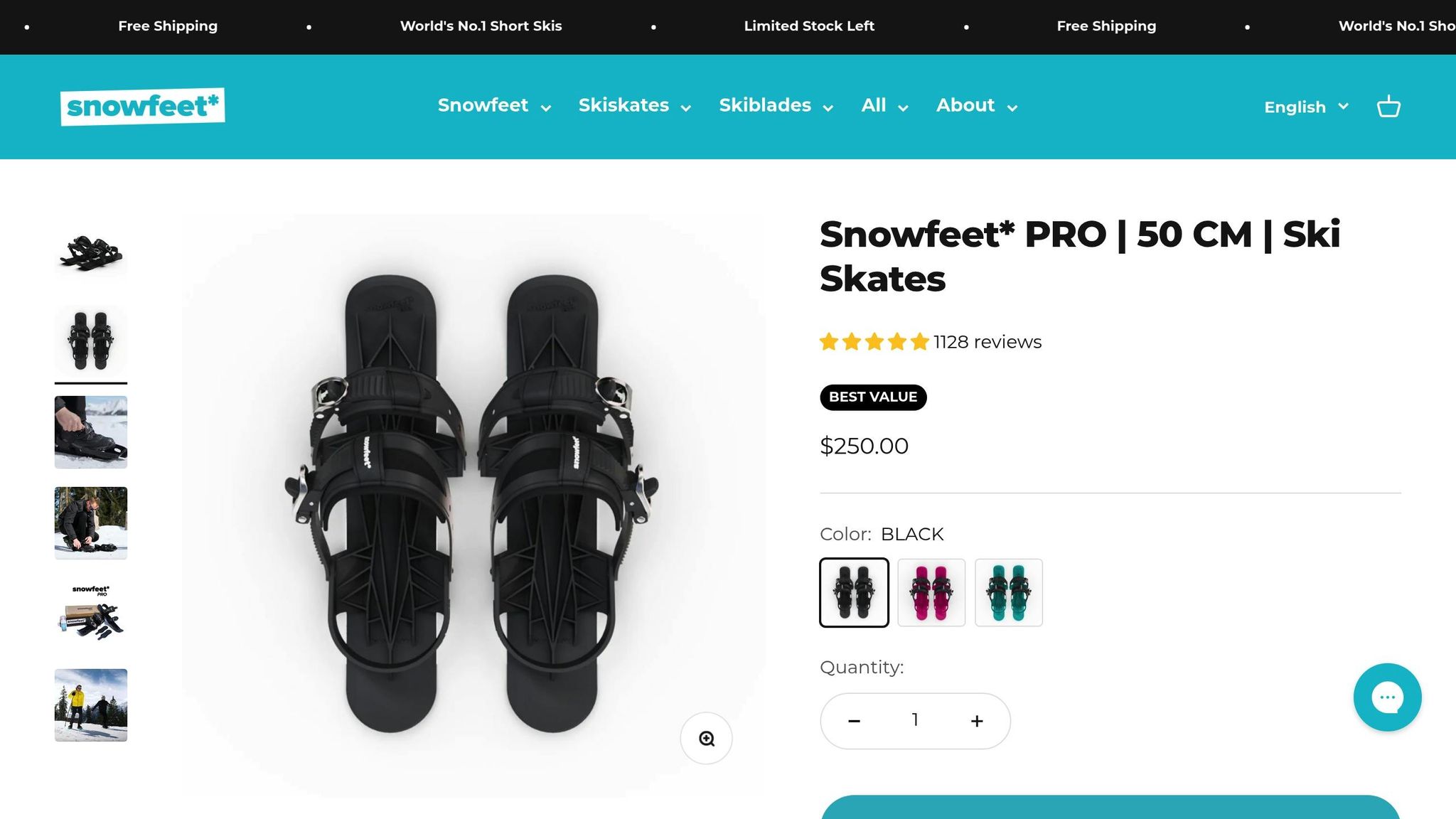
Model Snowfeet PRO je navržen tak, aby přechod na kratší lyže byl co nejplynulejší. Obsahuje několik funkcí, které řeší výzvy spojené s přechodem:
Vylepšená kontrola hran
Design hrany modelu PRO umožňuje carving, který působí přirozeně, a zároveň vyžaduje méně agresivní pohyby, což usnadňuje adaptaci.
Přizpůsobivost vázání
Díky více pozicím vázání si můžete přesně nastavit postoj podle své pohodlnosti.
Progresivní design učení
Model PRO o délce pouhých 50 cm nabízí výrazně menší poloměry zatáčení než tradiční lyže, které často dosahují 14 až 22 metrů. To z něj dělá skvělý krok k ovládnutí kratších lyží.
Pro snadnější přechod odborníci doporučují tyto kroky:
- Začněte jednoduše: Začněte na mírných svazích, abyste si zvykli na nový poloměr zatáčení a reakci hran.
- Zaměření na formu: Udržujte horní část těla stabilní a nechte nohy pohybovat se samostatně.
- Progresivní terén: Postupně zdolávejte strmější a náročnější svahy, jak roste vaše sebevědomí.
Omezení povrchu a podmínek
Kratší lyže přinášejí jedinečné výzvy při různých sněhových podmínkách, vyžadující jak úpravy techniky, tak specializované konstrukce pro efektivní výkon.
Problémy s ovládáním na povrchu
Různé sněhové povrchy představují odlišné výzvy pro kratší lyže, především kvůli jejich menší ploše. To omezuje kontakt hran, což může ovlivnit záběr a kontrolu.
| Typ povrchu | Dopad na výkon | Klíčová výzva |
|---|---|---|
| Led | Snížený záběr hran | Omezená stabilita a kontrola |
| Zpevněný sníh | Snížená rovnováha | Obtížnost udržení rychlosti |
| Kopečky | Zvýšená ovladatelnost | Vyžaduje přesnou techniku |
| Smíšený terén | Proměnlivý výkon | Je potřeba adaptace |
Na ledových površích vyžadují kratší lyže záměrné, kontrolované pohyby a širší postoj pro udržení stability. Náhlé pohyby by měly být vyvarovány, aby nedošlo ke ztrátě kontroly. Tyto výzvy vedly Snowfeet k vývoji specifických designových prvků, které tyto problémy řeší.
Design Snowfeet All-Mountain
Aby Snowfeet překonaly omezení kratších lyží, představily model All-Mountain 120 CM, který kombinuje stabilitu a obratnost. Jeho mírně delší délka zvyšuje výkon při zachování manévrovatelnosti. Klíčové vlastnosti zahrnují:
- Technologie hran: Precizně vyladěné hrany poskytují nezbytný grip na ledových površích, zlepšují kontrolu v náročných podmínkách.
- Všestranný výkon: Délka 120 CM vyvažuje stabilitu a obratnost, díky čemuž jsou tyto lyže přizpůsobivé měnícím se sněhovým podmínkám během dne.
- Adaptace terénu: Navrženo pro hladké přechody mezi tvrdým a měkčím sněhem, zajišťující konzistentní výkon na různorodém terénu.
Pro smíšené podmínky se zaměřte na plynulé, kontrolované pohyby s správnou rovnováhou a zapojením hran pro udržení kontroly. Na muldových sjezdovkách zaujměte mírně pokrčený postoj s ohnutými koleny, abyste absorbovali nárazy a umožnili rychlé, přesné zatáčky.
Tyto designové prvky odrážejí závazek Snowfeet vytvářet lyže, které vynikají v různých podmínkách a nabízejí spolehlivý výkon a všestrannost.
Závěr: Klíčové kompromisy
Pokud jde o délky lyží, kompromisy jsou jasné: výběr mezi kratšími a delšími lyžemi znamená vyvážení výkonu s osobními preferencemi. Zde je rychlý přehled hlavních úvah:
| Aspekt | Výhody | Omezení |
|---|---|---|
| Kontrola rychlosti | Snazší provádět rychlé zatáčky a manévry | Méně stabilní při vyšších rychlostech |
| Výkon na sněhu | Skvělé pro boule a upravené sjezdovky | Má potíže s hlubokým POWDER |
| Křivka učení | Jednodušší pro začátečníky při osvojování dovedností | Může bránit rozvoji pokročilých technik |
| Přizpůsobivost terénu | Perfektní pro parky nebo úzká místa | Ne tak účinné na strmých svazích |
Snowfeet vytvořil designy, které řeší tyto výzvy a nabízejí možnosti pro různé lyžařské styly. Jejich modely, jako 99 CM POWDER Skiblades se širší, parabolickou základnou nebo 120 CM Short Skis, usilují o rovnováhu mezi obratností a stabilitou.
Jak vybrat správnou délku lyží?
- Začátečníci až středně pokročilí lyžaři: Hledejte kratší lyže (65–85 cm) pro lepší kontrolu a snadnější zatáčky.
- Pokročilí lyžaři: Delší modely (99–120 cm) poskytují větší stabilitu, zejména při vyšších rychlostech.
- Milovníci POWDER: Lyže se širší základnou a plovoucími vlastnostmi jsou vaší volbou pro hluboký sníh.
- Freestyle nadšenci: Krátké lyže usnadňují triky a rychlé pohyby.
"Celkově krátké lyže zatáčejí rychleji, dlouhé lyže jedou rychleji. Nepotřebujete lyže dlouhé 140 cm ani 250 cm (vyjma expertů). Rovnováha mezi rychlostí a poloměrem zatáčení vám poskytne nejlepší zážitek."
Nakonec, sladění výběru lyží s vaším stylem a terénem zajišťuje hladší a příjemnější zážitek na sjezdovkách.
Často kladené otázky
Jaké jsou rozdíly v rychlosti a stabilitě mezi krátkými lyžemi a tradičními lyžemi?
Krátčí lyže, obvykle měřící méně než 160 cm, jsou známé svou obratností a snadnou ovladatelností. To je činí vynikající volbou pro začátečníky nebo ty, kteří projíždějí úzkými místy jako jsou boule nebo terénní parky. Jejich design umožňuje rychlé, ostré zatáčky a lepší ovládání na zledovatělých nebo nerovných površích – výhoda za specifických podmínek.
Na druhou stranu kratší lyže obětují část stability, zejména při vyšších rychlostech. Právě zde přicházejí na řadu delší lyže, obvykle 180 cm a více. Tyto lyže nabízejí lepší stabilitu a záběr, což je ideální pro rychlé sjezdy a hluboký POWDER. Jsou také oblíbené u pokročilých lyžařů, kteří si užívají carving s přesností a silou.
Volba mezi kratšími a delšími lyžemi závisí na vaší zkušenosti, stylu lyžování a terénu, který plánujete zdolávat. Kratší lyže vynikají v ovladatelnosti a manévrovatelnosti, zatímco delší lyže poskytují stabilitu a lepší výkon, pokud je cílem rychlost a síla.
Jak bych měl upravit svou lyžařskou techniku při přechodu na kratší lyže?
Při přechodu na kratší lyže může pár úprav vaší techniky udělat velký rozdíl. Za prvé, držte váhu přímo nad lyžemi. Kratší lyže mohou působit méně stabilně, zvláště při vyšší rychlosti, takže udržení rovnováhy je klíčové. Zkuste více pokrčit kolena a srovnat boky s nohama – to pomáhá zlepšit kontrolu i stabilitu.
Protože kratší lyže jsou stavěné pro těsnější a rychlejší zatáčky díky menšímu poloměru otáčení, budete se muset soustředit na přesné a obratné pohyby. Začněte trénovat na mírných svazích, abyste si zvykli na jejich citlivost, než přejdete na strmější terén. S časem a praxí zjistíte, jak energické a zábavné může být lyžování s kratšími lyžemi!
Jaké designové prvky způsobují, že Snowfeetovy kratší lyže dobře fungují v hlubokém sněhu a na zledovatělém terénu?
Snowfeetovy kratší lyže, jako jsou Skiblades a Skiskates, jsou vyrobeny s širšími špičkami a patami pro lepší rovnováhu a stabilitu, což je činí skvělou volbou pro pohyb v hlubokém sněhu. Jejich lehký design usnadňuje ovládání, zatímco kovové hrany poskytují spolehlivý záběr na zledovatělých místech. Tyto vlastnosti společně vytvářejí plynulou a kontrolovanou jízdu i v náročných podmínkách.
Kompaktní délka těchto lyží je také ideální pro rychlé zatáčky a zvýšenou obratnost, což se hodí na nerovném nebo náročném terénu. Vezměte si například 99 cm Skiblades – jsou navrženy tak, aby excelovaly v POWDER, nabízejí zábavný a citlivý zážitek bez ohledu na sněhové podmínky.





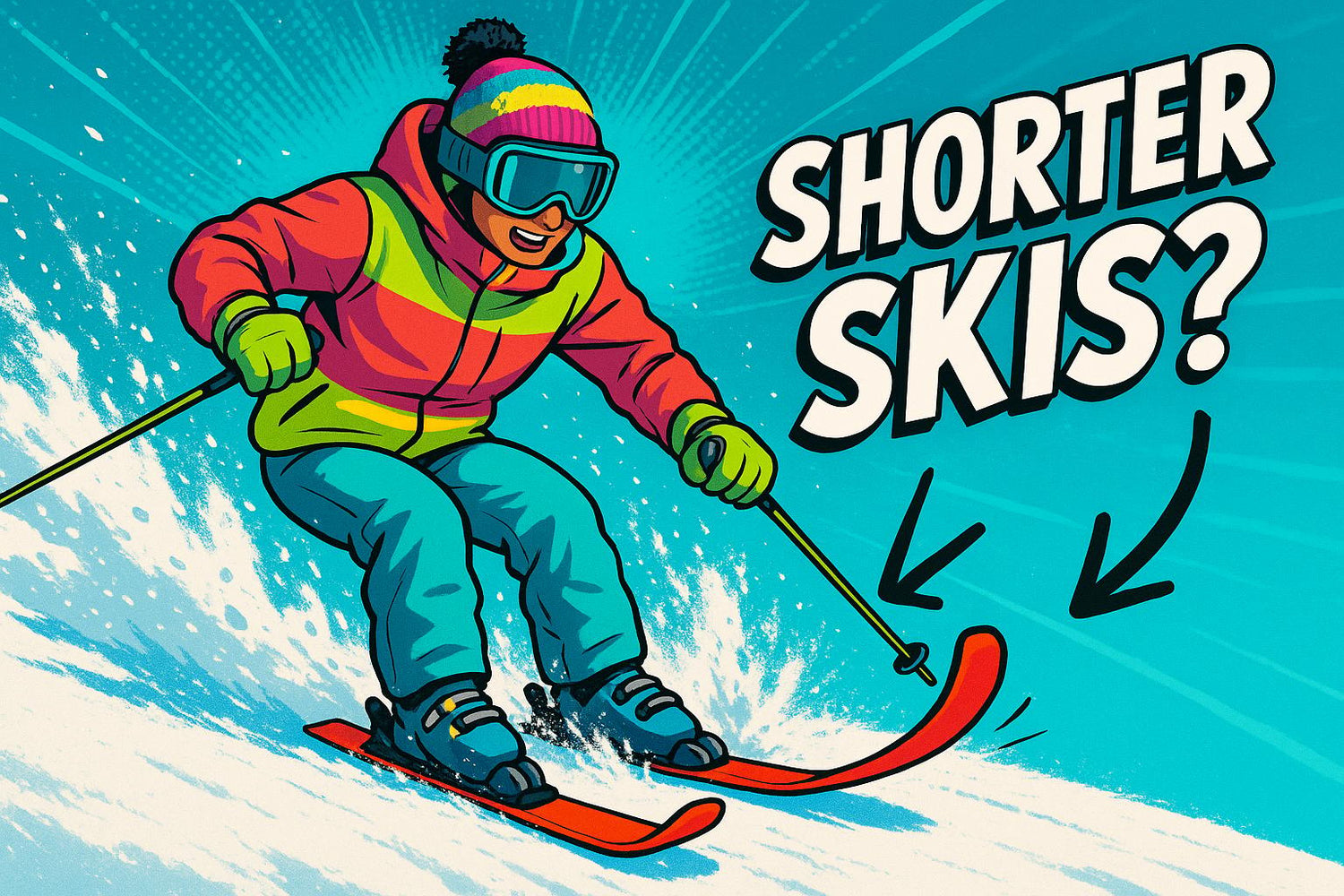
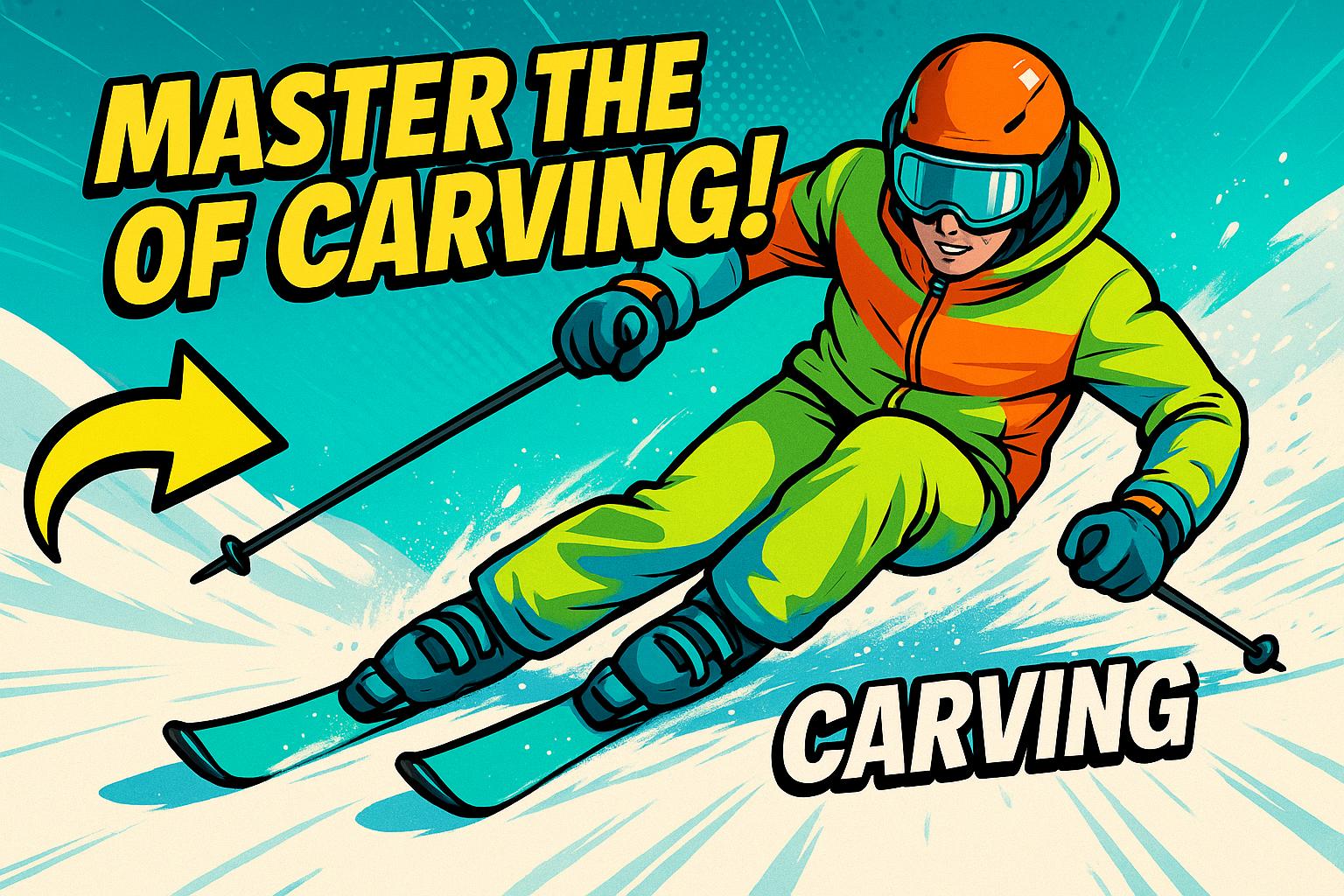
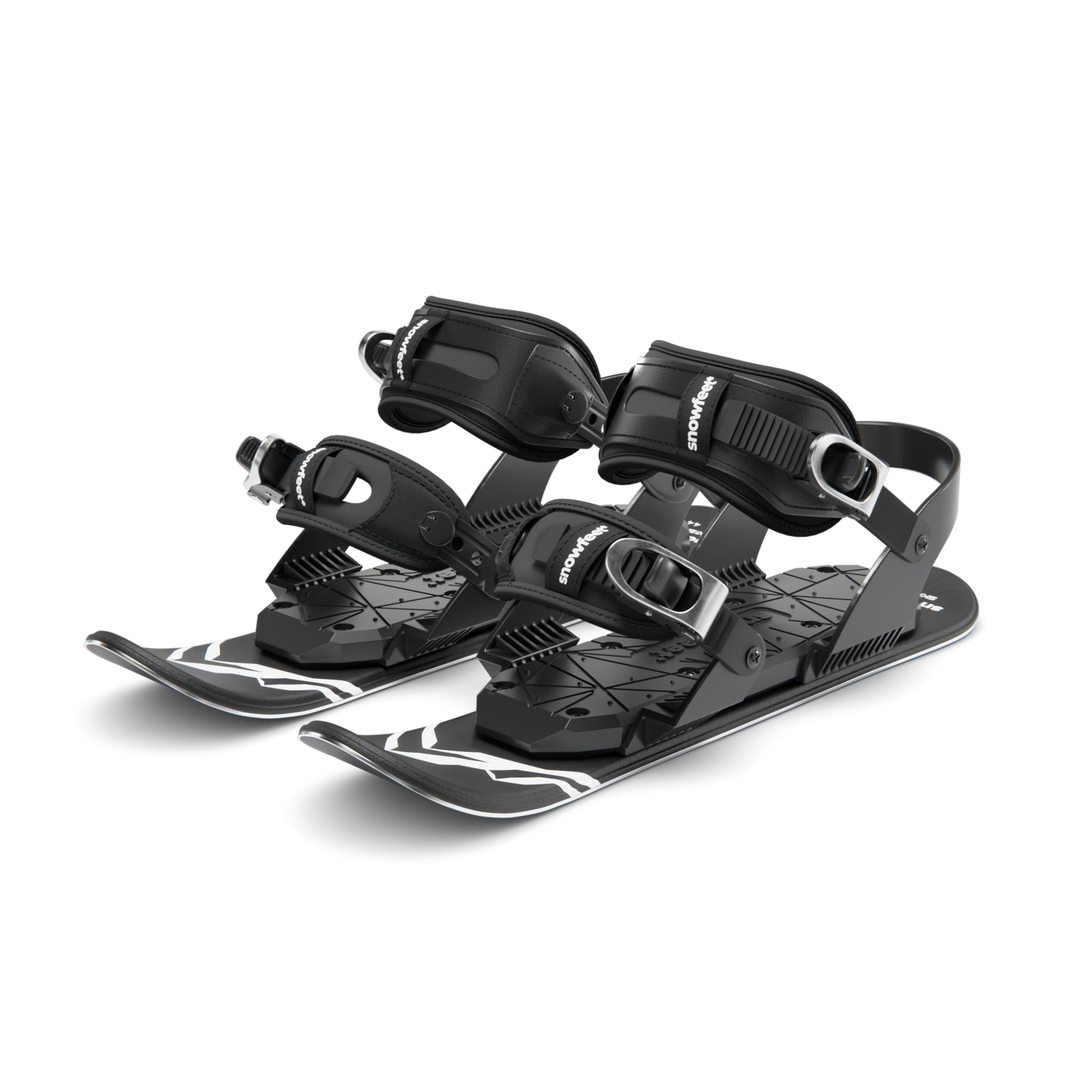

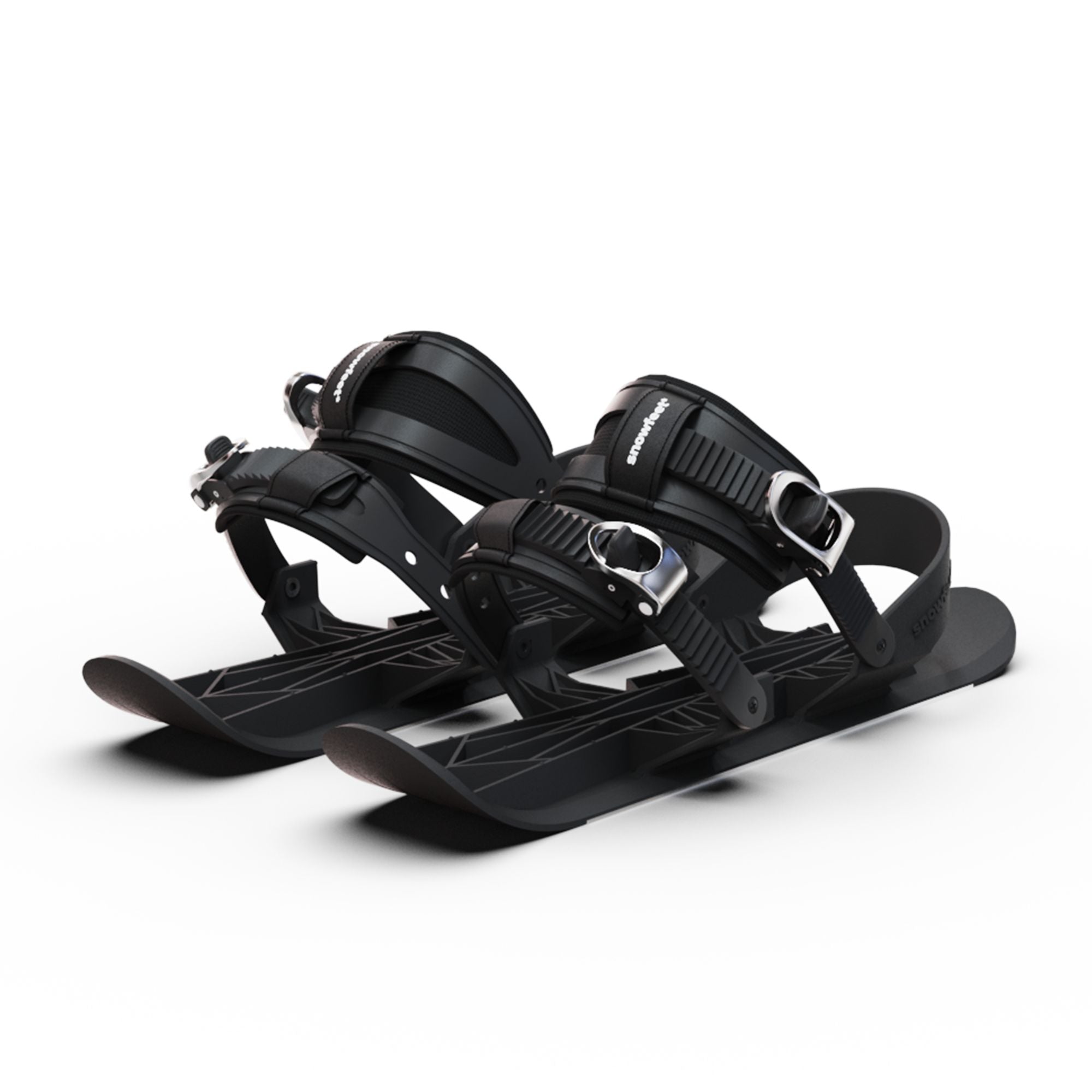
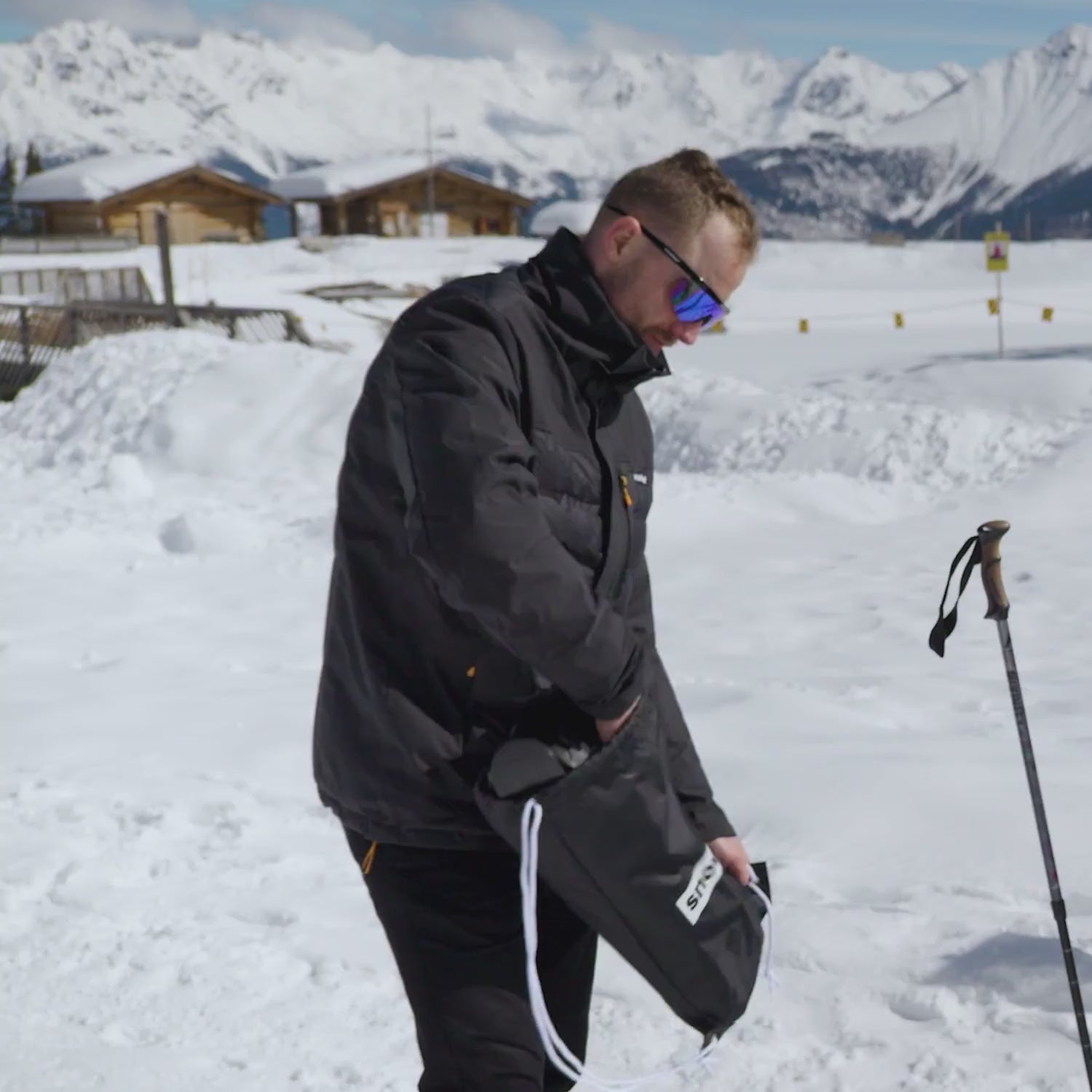
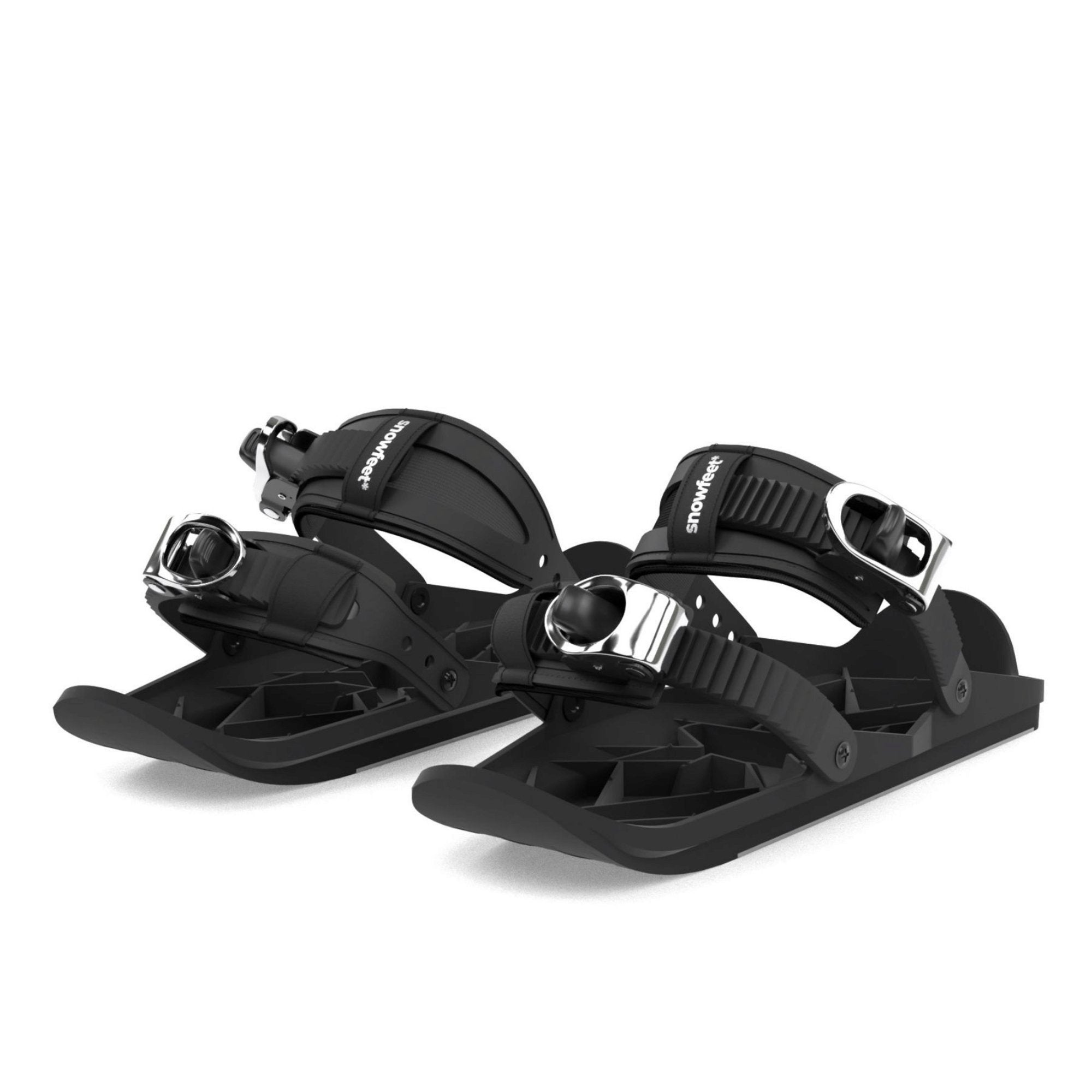
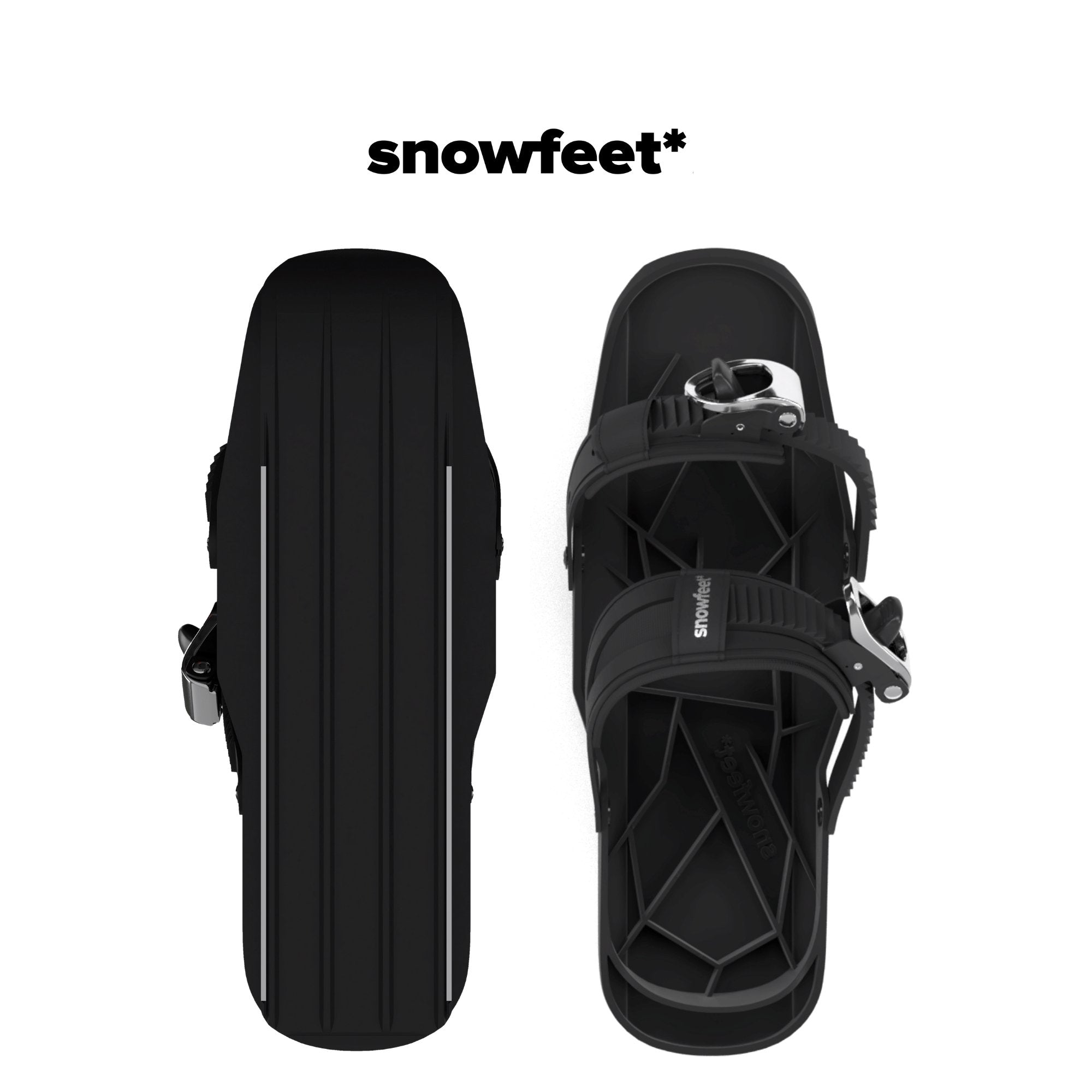
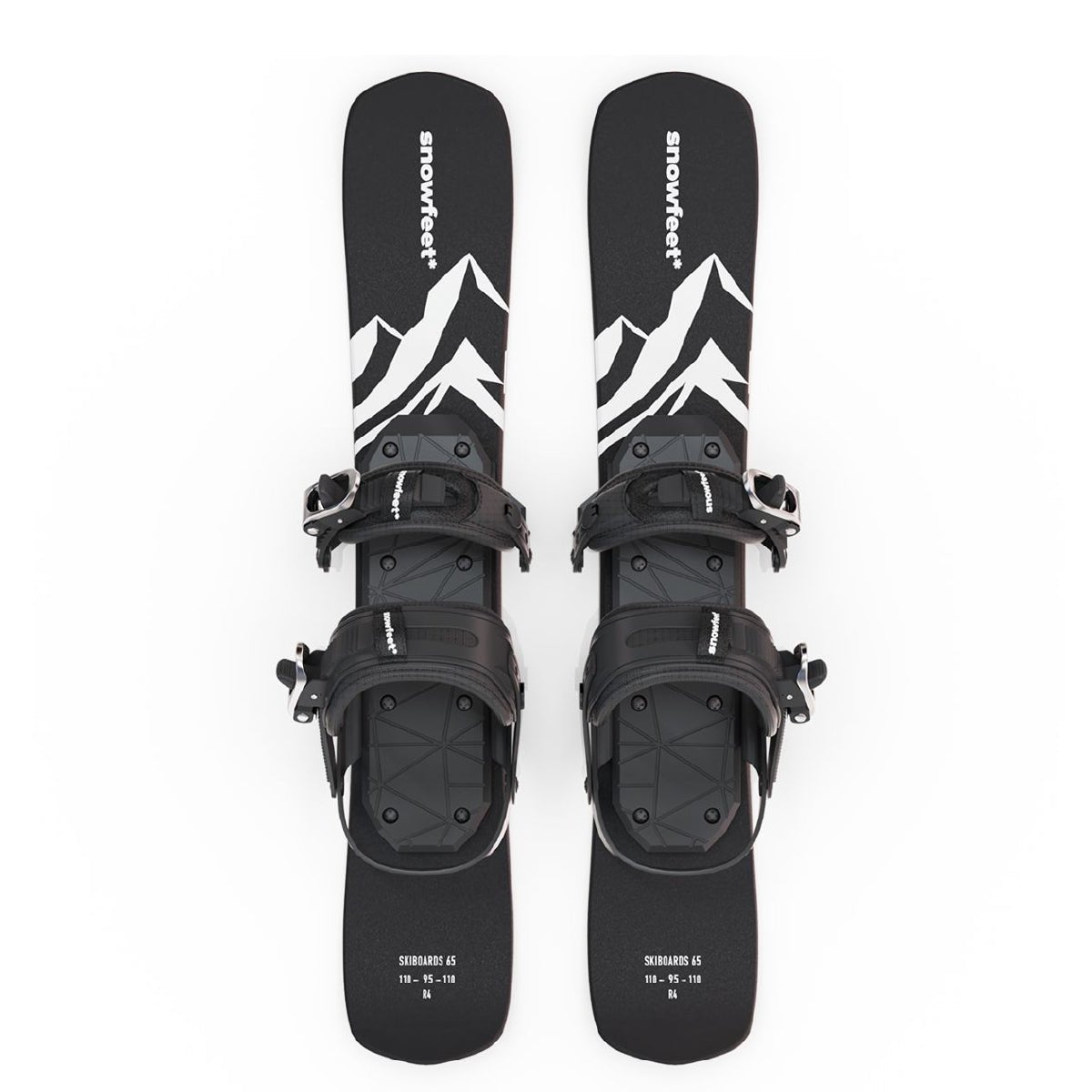
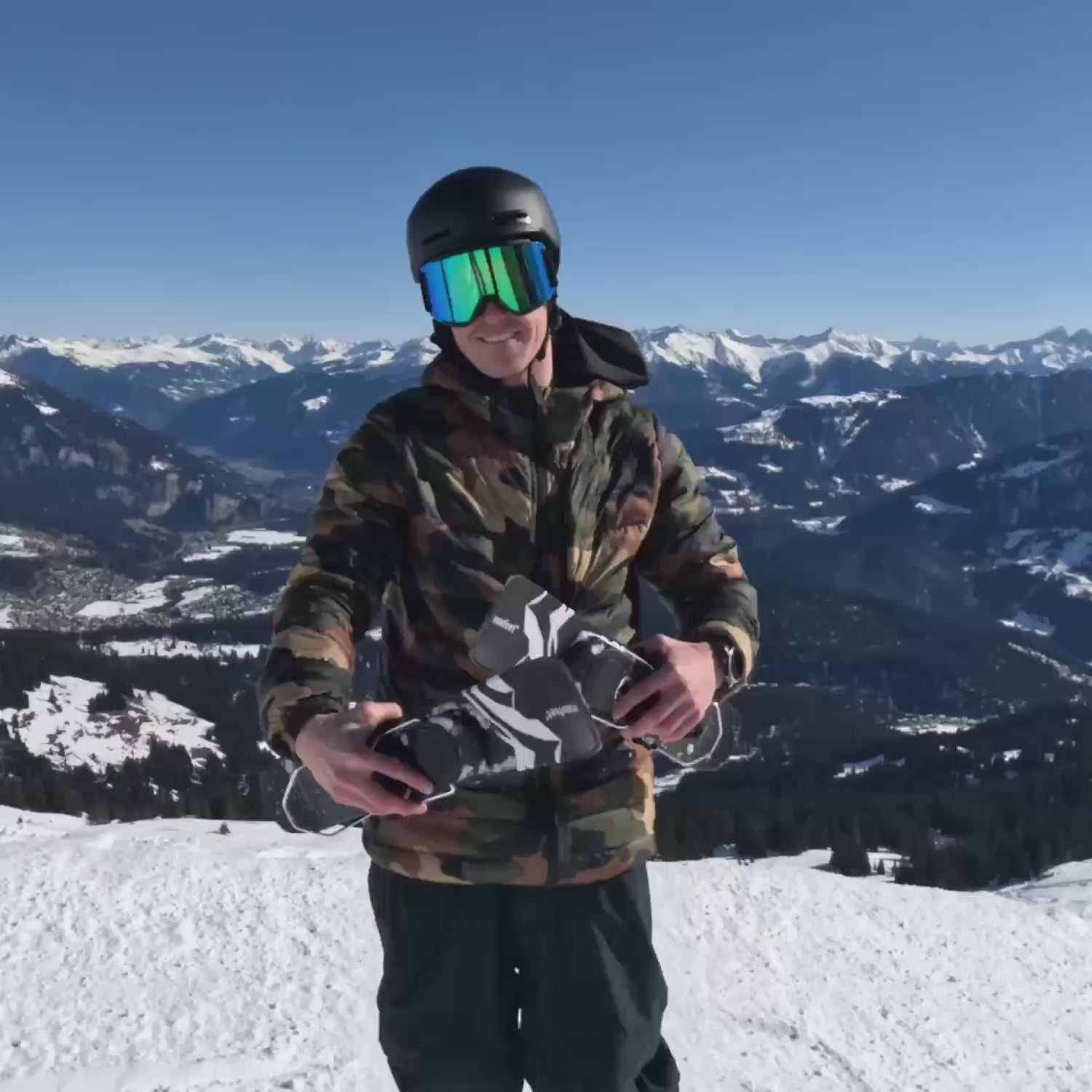
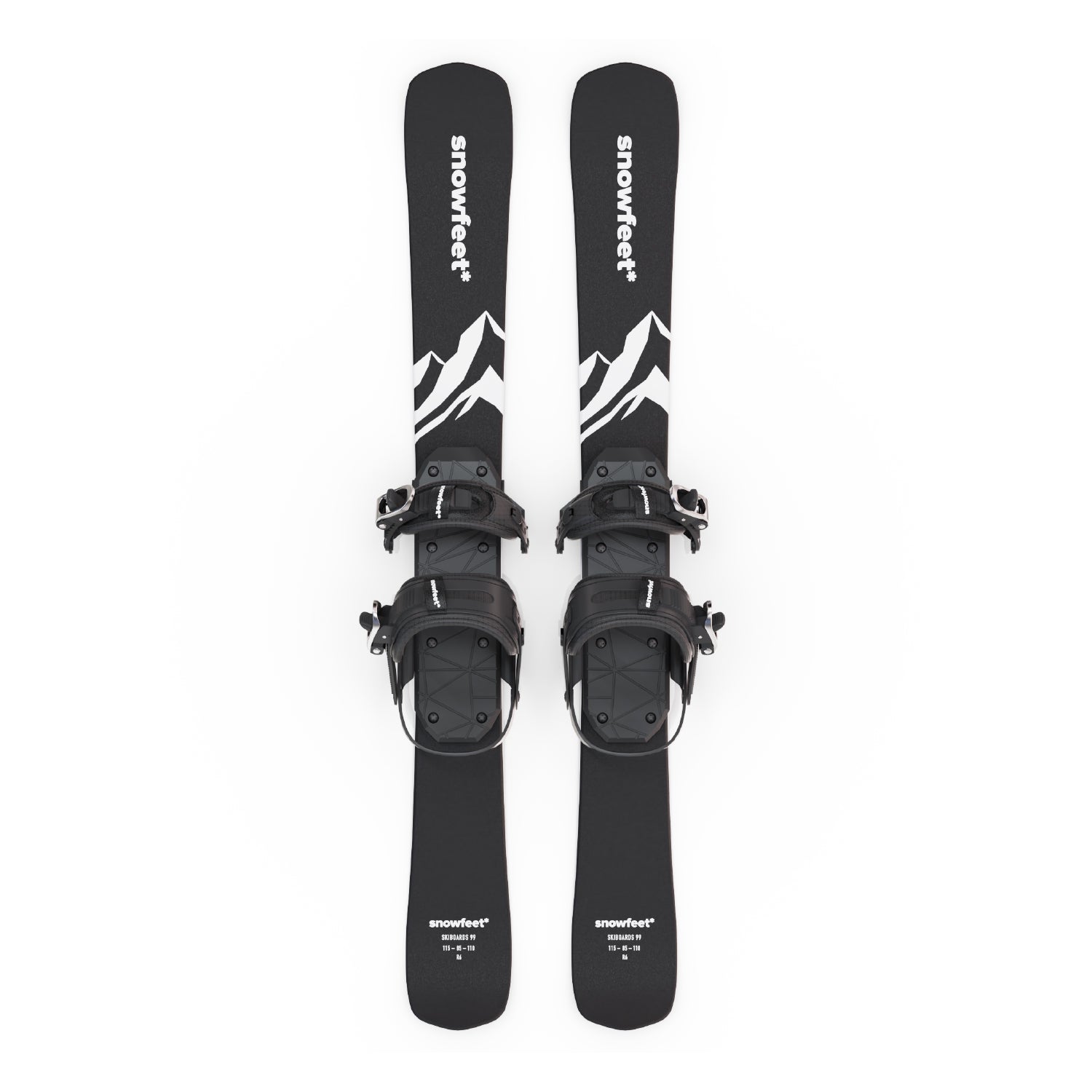
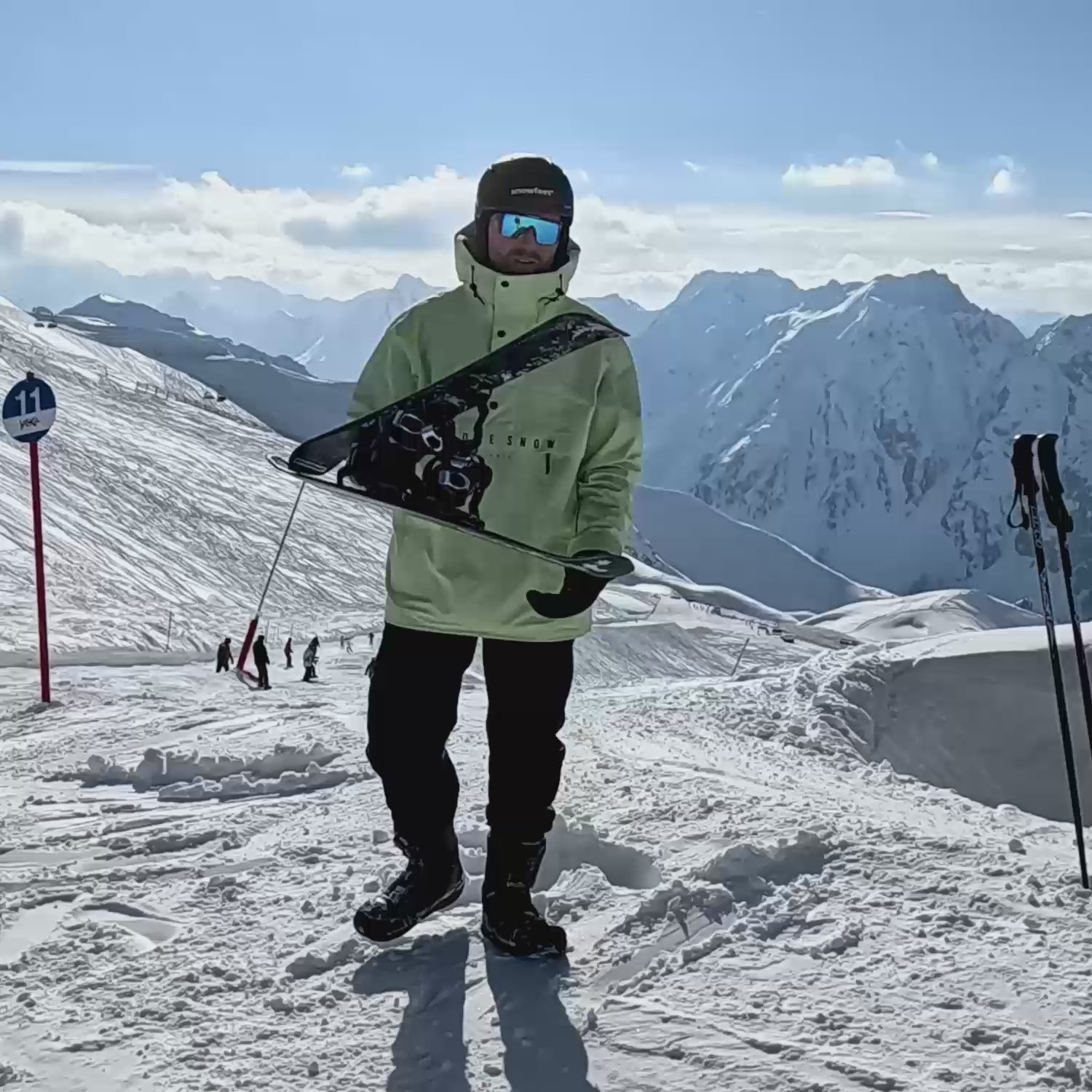
Zanechte komentář
Tento web je chráněn službou hCaptcha a vztahují se na něj Zásady ochrany osobních údajů a Podmínky služby společnosti hCaptcha.